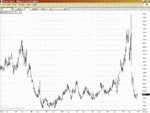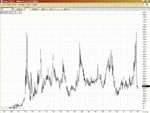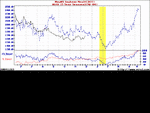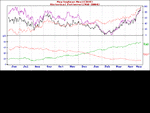gene
Active member
- Messages
- 167
- Likes
- 0
I'm buying Soybean Meal. The fundamentals are/have been bearish, but the price hasn't kept dropping, lately. On the supportive side, farmers have been holding out for higher prices.
I expect (hope) to make a bundle in this market, but not very soon. I was thinking Soybeans and Meal are starting a saucer bottom that will last only a few or several months, but now, simply because of the very tight consolidation on the weekly chart, I'm wondering if the market will take off sooner than I expected.
My intention (always subject to change, of course) is to ride the market through thick and thin. I'm in for the long haul. When the chart shows a definite up trend, I will add to my position on dips.
Looking at the weekly chart, I believe Soybean Meal will reach the 190 to 200 range with no problem. If the market obeys the 50% retracement "rule", then about 245 is the target. And that's ignoring the top of the spike. If soybean rust becomes a problem....!!!! ... / :cheesy:
What do y'all think?
I expect (hope) to make a bundle in this market, but not very soon. I was thinking Soybeans and Meal are starting a saucer bottom that will last only a few or several months, but now, simply because of the very tight consolidation on the weekly chart, I'm wondering if the market will take off sooner than I expected.
My intention (always subject to change, of course) is to ride the market through thick and thin. I'm in for the long haul. When the chart shows a definite up trend, I will add to my position on dips.
Looking at the weekly chart, I believe Soybean Meal will reach the 190 to 200 range with no problem. If the market obeys the 50% retracement "rule", then about 245 is the target. And that's ignoring the top of the spike. If soybean rust becomes a problem....!!!! ... / :cheesy:
What do y'all think?
Attachments
Last edited:




